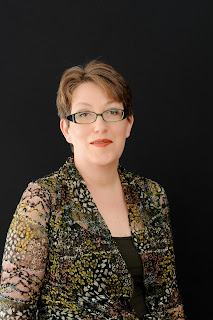Saturday, 16th April, 2011. I am at Manchester’s Bridgewater Hall with fellow members of the London Symphony Chorus to sing Verdi’s Otello with Italian Conductor Gianandrea Noseda.
Whilst it’s not the first time I have sung Otello, it is the first time I have sung under Noseda’s baton. On Monday he joined us in London for our piano rehearsal. (This is the first time the choir and conductor come together to rehearse the piece before joining forces with the orchestra and soloists for the tutti rehearsals and then the concert itself). Noseda’s train from Manchester is delayed and our time with him is brief. It is, though, enough for us to realise that he is going to take this piece at quite a speed and also to experience his use of humour as a way to illustrate the points he wants to make. This is a rehearsal which stimulates curiosity and excitement. On Friday, we travel by train to Manchester – just as the City’s football fans are travelling south for a historic encounter in the FA Cup between Manchester City and Manchester United. We are in good time for our first tutti at the Bridgewater Hall.
Verdi’s music speaks for itself, addressing both light and shade in the turbulent story of Otello and his wife Desdemona. The early expressions of love between the two are balanced by the dark scenes that unfold as Otello becomes increasingly convinced of his innocent wife’s unfaithfulness and, ultimately, kills her in his rage. Throughout the story the audience has access to more information than any one of the characters and experiences the discomfort of knowing of Iago’s treachery, of Desdemona’s purity and innocence and of Otello’s susceptibility. Those of us who know the piece are looking forward to moments of poetry and drama, including the scene in Act 3 when Otello changes from loving husband to a man filled with rage, Desdemona’s response when her husband flings her to the floor in the same Act and, in Act 4, her expression of her premonition of her death and the famous “Willow Song”.
Even in rehearsal the soloists delight. Barbara Frittoli is convincing in the role of Desdemona and her voice is exquisite. Clifton Forbis (in the role of Otello) stimulates just a little jealousy amongst the tenors of the chorus for his fine tenor voice. Lado Ataneli (in the role of Iago) draws attention for his flamboyant acting and equally flamboyant hair. Any concert performance of opera has limitations and at the same time many moments are carefully staged to convey the drama of the piece.
There is another aspect to our experience for, whilst Noseda is new to us, he is well known to members of the BBC Philharmonic with whom he has been working since 2002 and tonight is his final concert in the role of Chief Conductor. You would not know this from the way he conducts for, as much as he brings humour – comedy even – to the process of rehearsal, his performance in the concert is totally committed. (So much so that his vocal expressions remind me of John McEnroe in his Wimbledon days). At the same time, at the close of the performance I watch Noseda kiss the score from which he has been conducting and embrace some of the key players of the orchestra, and I listen to the response of the audience as they applaud and cheer. It seems to me that there is an intimacy in Noseda’s gestures which is rarely seen on the concert platform, let alone more widely amongst leaders.
As much as Otello conveys the drama of our human lives, Noseda reminds us that to lead is to commit – to give ourselves fully to something even whilst knowing that we cannot predict the response of others, and in this way to be vulnerable in our visibility. This is leadership as an act of faith. And everything that makes us human is with us in this act of leadership, whether or not we dare to own it and to reveal it, willingly, to others.
PS If you’d like to hear our performance of Verdi’s Otello, tune into Radio 3 at 3pm on Thursday, 2nd June, 2011.

